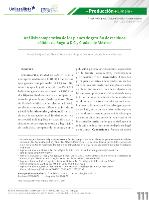Abstract
Introduction. Mexico City has approximately 8’918,853 inhabitants that generate an average of 12,893 tons / day, while Bogotá, with more than 7’412,516 inhabitants generates an approximate of 7,200 tons / day. Objective. Carry out a comparative analysis between the solid waste management plans of Mexico City in relation to Bogotá, highlighting similarities, differences, strengths, and weaknesses. Materials and methods. The method of this research is based on a bibliographic review in databases, and documents corresponding to the legislation of each country, comparing aspects such as population, waste generation, source separation, collection, transfer, and final disposal. Results. Among the main successes found in both cities are the new implementation of zero waste plans, recycling, coverage of the cleaning service companies, all with a view to reducing the amount of waste deposited in sanitary landfills. The increase in the separation at the origin, despite being low, is a plus; the transport of waste is regular, but it was identified that in both cities it covers most of the territorial extension, which contributes to the reduction of urban centers of illegal waste disposal. Conclusions. Both cities have strong points such as the collection and transfer process in Mexico City and recycling in Bogotá. Among the aspects of improvement, separation at the source needs to be promoted, waste transportation needs to be technified and renewed in Mexico City, and better implemented in Bogotá. © 2022 Corporacion Universitaria Lasallista. All rights reserved.














